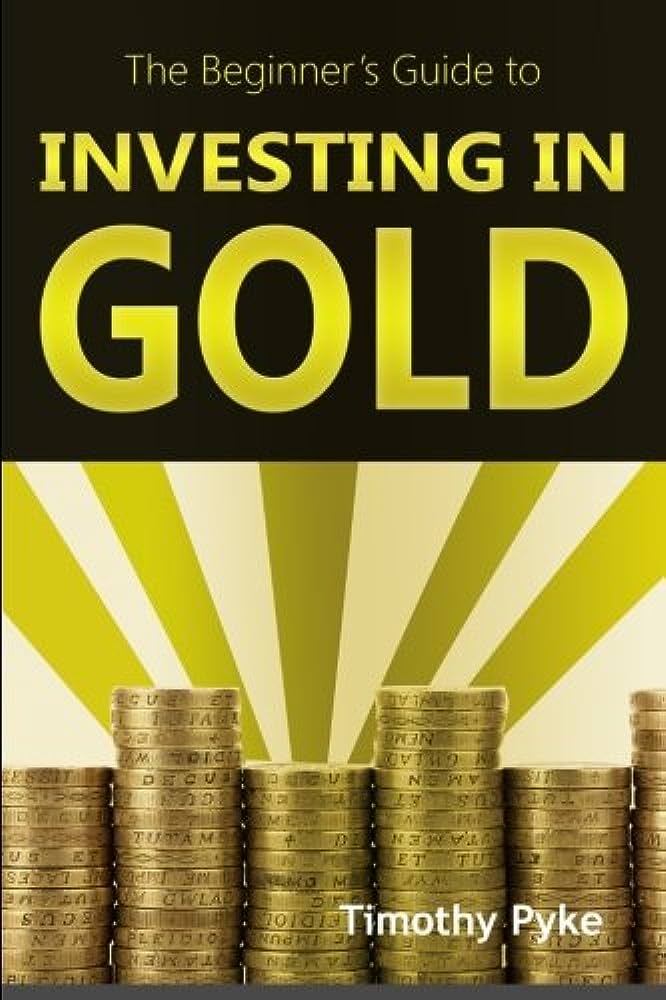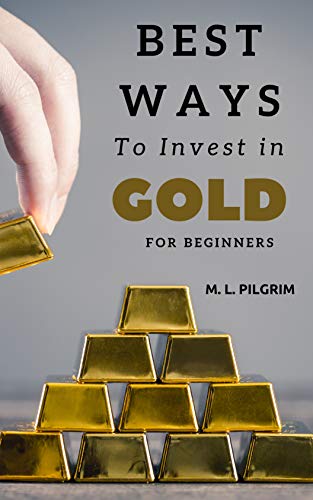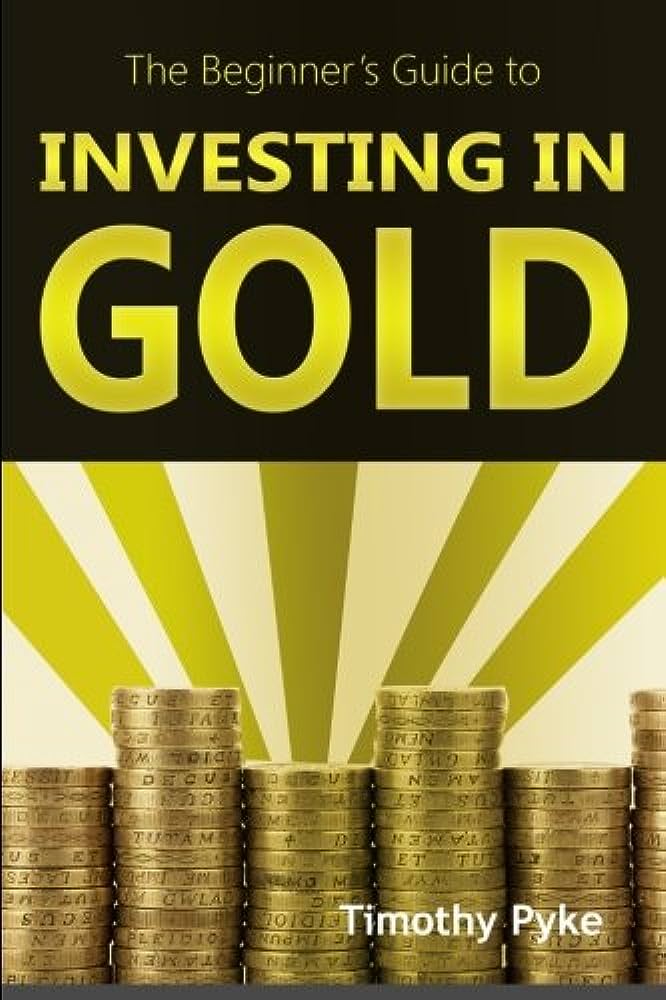Are you curious about investing in gold but not sure where to start? Look no further! “A Beginner’s Guide to Investing in Gold” has got you covered. In this comprehensive guide, we will walk you through the ins and outs of investing in gold, debunk common myths, and provide you with practical strategies for 2023.
If you’ve ever wondered how to get started with gold investments, we’ve got the information you need to make informed decisions. From understanding the different forms of gold investments to learning about market trends and factors that influence prices, this guide will equip you with the knowledge necessary to navigate the world of gold investments with confidence. So, whether you’re a novice looking to dip your toes into the shimmering world of gold or an experienced investor seeking updated strategies for 2023, this guide is designed to be your trusted companion on this exciting journey. Let’s embark on this gold investment adventure together!

This image is property of Amazon.com.
A Beginner’s Guide to Investing in Gold
What is Gold?
Gold, a precious metal, has been valued for centuries due to its beauty and rarity. It is widely used for jewelry, coins, and various industries. Gold is known for its inherent stability and ability to retain its value, even in times of economic uncertainty.
Why Invest in Gold?
Investing in gold can be an excellent way to diversify your investment portfolio and protect it against inflation or economic downturns. Gold is often seen as a safe-haven asset, meaning its value tends to rise when other investments, such as stocks and bonds, decline. It can act as an insurance policy against unpredictable market conditions.
Types of Gold Investments
Before delving into gold investments, it’s crucial to understand the various options available:
-
Physical Gold: This involves purchasing gold in the form of bars, coins, bullion, or even jewelry.
-
Gold Exchange-Traded Funds (ETFs): These are investment funds that track the price of gold and can be traded on stock exchanges.
-
Gold Mining Stocks: Investing in companies that mine gold and other precious metals.
-
Gold Futures and Options: These are contracts that allow investors to speculate on the future price of gold.
-
Gold Mutual Funds: Mutual funds that specifically focus on gold-related investments.
Factors to Consider Before Investing in Gold
When considering an investment in gold, several factors should be taken into account:
Financial Goals
Define your financial goals before investing in gold. Are you looking for long-term growth, hedging against inflation, or preserving wealth? Understanding your objectives will help determine the appropriate gold investment strategy.
Risk Tolerance
It’s essential to gauge your risk tolerance. Gold investments can experience volatility, and prices may fluctuate. Assess how comfortable you are with potential ups and downs in the market.
Market Conditions
Stay informed about the international and domestic economic conditions that can impact the price of gold. Factors like inflation, interest rates, and geopolitical events can influence gold prices.
Real vs. Paper Gold
Decide whether you want to invest in physical gold or through paper gold. Physical gold offers tangible ownership, while paper gold provides indirect exposure through financial instruments like ETFs.
Storage and Security
If you choose to invest in physical gold, consider where you will store it safely. Opt for secure storage options like a home safe, safe deposit boxes, or gold depositories. It is also wise to ensure your gold investments through appropriate insurance coverage.
Different Ways to Invest in Gold
Let’s explore the different methods you can utilize to invest in gold:
Physical Gold
Investing in physical gold allows you to own the actual metal. You can purchase gold bars, coins, bullion, or jewelry. It provides a tangible asset that you can hold and store according to your preference.
Gold Exchange-Traded Funds (ETFs)
Gold ETFs are investment funds traded on stock exchanges that aim to track the price of gold. They provide the convenience of buying gold without the need for physical storage. Gold ETFs offer liquidity and the flexibility to buy or sell at market prices throughout the trading day.
Gold Mining Stocks
Investing in gold mining stocks involves buying shares in companies involved in gold exploration, extraction, and production. These stocks are influenced by both the performance of the broader stock market and the company’s individual success in finding and mining gold.
Gold Futures and Options
For more experienced investors, gold futures and options offer opportunities to profit from the price movements of gold without directly owning the metal. These derivative contracts allow you to speculate on the future price of gold, potentially providing leverage and flexibility.
Gold Mutual Funds
Gold mutual funds pool money from multiple investors to invest in gold-related assets, such as mining stocks, physical gold, or gold exchange-traded funds. They offer diversification and professional management, making them suitable for investors seeking exposure to gold but lacking the expertise or capital to invest individually.
Buying Physical Gold
If you decide to invest in physical gold, several options are available:
Gold Bars
Gold bars are rectangular bars of gold produced by refineries. They typically range in weight from a gram to one kilogram. Gold bars offer a straightforward way to purchase a significant amount of gold in a single transaction.
Gold Coins
Gold coins are minted by government or private mints and are often favored for their aesthetic appeal. They come in various sizes and designs, making them attractive to both investors and collectors.
Gold Bullion
Gold bullion refers to gold bars or coins that meet specific standards of purity and quality. They are typically traded at a slight premium above the spot price of gold.
Gold Jewelry
Investing in gold jewelry allows you to enjoy the dual benefit of owning a precious metal and a fashion accessory. However, keep in mind that jewelry may not retain its value in the same way as bullion.
Gold ETFs Backed by Physical Gold
Gold ETFs backed by physical gold provide investors with exposure to the metal without the need for physical storage. By purchasing shares in the ETF, you indirectly own a portion of the underlying gold held by the fund.
Investing in Gold ETFs
What are Gold ETFs?
Gold exchange-traded funds (ETFs) are investment funds that trade on stock exchanges and aim to track the price of gold. Investors can buy and sell these funds, which are backed by physical gold, like shares of stock.
Benefits of Gold ETFs
Investing in gold ETFs offers several advantages. They provide exposure to the price of gold without the need for physical delivery or storage. Gold ETFs also offer liquidity, transparency, and the ability to trade throughout the trading day.
How to Buy Gold ETFs
To invest in gold ETFs, you’ll need to open a brokerage account. Once your account is set up, you can search for the ETF you’re interested in and place an order to buy shares. It’s important to research the different ETFs available to find one that aligns with your investment goals and preferences.
Investing in Gold Mining Stocks
Understanding Gold Mining Stocks
Investing in gold mining stocks involves buying shares in companies engaged in gold exploration, extraction, or production. These stocks are influenced by both the overall stock market’s performance and the individual company’s success in finding and mining gold.
Factors to Consider when Investing in Mining Stocks
Several factors should be considered when investing in gold mining stocks. These include the company’s financial health, management team’s experience, exploration and development projects, production costs, and geopolitical risks in the areas where the company operates.
Risks and Rewards of Mining Stocks
Investing in gold mining stocks can offer significant rewards, but it also comes with risks. Mining stocks are more volatile compared to the price of gold itself. Factors such as geological uncertainties, regulatory changes, and operational challenges can impact mining stock prices.

This image is property of Amazon.com.
Gold Futures and Options
Introduction to Gold Futures and Options
Gold futures and options are derivative contracts that allow investors to speculate on the future price of gold. Futures contracts obligate the buyer and seller to transact gold at an agreed-upon price and date in the future, while options provide the right (but not the obligation) to buy or sell gold at a predetermined price within a specific time frame.
Pros and Cons of Gold Futures and Options
Investing in gold futures and options offers potential advantages, such as leverage and the ability to profit from both rising and falling gold prices. However, these investment vehicles require a deep understanding of the markets, and losses can exceed the initial investment.
How to Start Trading Gold Futures and Options
To begin trading gold futures and options, you’ll need to open an account with a commodity futures brokerage firm. It’s essential to educate yourself on the intricacies of futures and options trading, including margin requirements, contract specifications, and market analysis, to make informed investment decisions.

This image is property of Amazon.com.
Gold Mutual Funds
What are Gold Mutual Funds?
Gold mutual funds are investment funds that pool money from multiple investors to invest in gold-related assets, such as mining stocks, physical gold, or gold ETFs. They provide diversification and professional management, making them suitable for investors seeking exposure to gold without the additional complexities of individual stock selection.
Advantages and Disadvantages of Gold Mutual Funds
Gold mutual funds offer several advantages. They provide instant diversification by investing in a portfolio of gold-related assets, reducing the risks associated with individual investments. Additionally, these funds are managed by experienced professionals who specialize in the gold market.
However, it’s important to consider the expenses associated with mutual funds, such as management fees and potential sales charges. Additionally, the performance of gold mutual funds may be influenced by broader market factors and the fund manager’s strategies.
Evaluating and Choosing Gold Mutual Funds
When selecting a gold mutual fund, consider factors such as the fund’s historical performance, expense ratio, management team’s experience, and the fund’s investment strategy. It’s advisable to review the fund’s prospectus and consult with a financial advisor to ensure it aligns with your investment goals and risk tolerance.

This image is property of Amazon.com.
How to Store and Secure Your Gold Investments
Home Storage
If you choose to store your physical gold at home, take precautions to ensure its safety. Consider investing in a quality safe or vault that is securely bolted to the floor or wall. Additionally, inform your insurance provider about your gold holdings to ensure proper coverage.
Safe Deposit Boxes
Safe deposit boxes provided by banks can offer a secure storage option for your physical gold. Ensure that the bank you choose has a strong reputation for security and verify that their insurance coverage includes the contents of the safe deposit box.
Gold Depository
Gold depositories specialize in securely storing precious metals for investors. These facilities often have advanced security systems, insurance coverage, and regular auditing procedures to ensure the safety of your gold investments.
Insurance for Gold Investments
It’s essential to protect your gold investments with appropriate insurance coverage. Consult with an insurance provider who specializes in precious metals to determine the necessary coverage based on the value of your investments. This will safeguard your investment against risks such as theft, fire, or damage.

This image is property of Amazon.com.
Monitoring and Managing Your Gold Portfolio
Regular Performance Review
Regularly review the performance of your gold investments to ensure they align with your financial goals and risk tolerance. Keep an eye on market trends and economic indicators that can impact the price of gold. Stay informed through reputable sources of financial information and consider seeking advice from a financial advisor.
Balancing Your Portfolio
Maintaining a balanced investment portfolio is crucial to managing risk. Consider diversifying your investments across multiple asset classes, including stocks, bonds, cash, and gold. The percentage allocated to gold will depend on your financial goals and risk tolerance.
Tax Considerations
Consult with a tax professional to understand the tax implications of your gold investments. The tax treatment of gold can vary depending on the country and the specific investment vehicle you choose. Understanding the tax rules will help you make informed investment decisions and optimize your tax burden.
When to Buy or Sell Gold
Deciding when to buy or sell gold requires careful analysis and consideration of various factors, including market conditions, economic indicators, and your investment goals. Avoid attempting to time the market perfectly and focus on long-term investing principles. Regularly assess your portfolio and make adjustments as needed to maintain your desired asset allocation.
By understanding the basics of gold investing, considering key factors before investing, exploring different investment options, and properly storing and managing your gold portfolio, you can embark on a rewarding journey into the world of gold investments. Remember to stay informed, seek professional advice when necessary, and approach your gold investments with a well-thought-out strategy. Happy investing!











